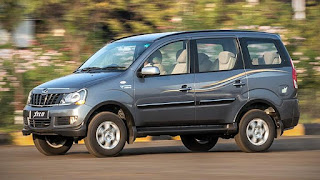Based on Taxi GPS Data
Based on Taxi GPS Data
Recommender systems are constructed to search thecontent of interest from overloaded information by acquiring use-ful knowledge from massive and complex data. Since the amountof information and the complexity of the data structure grow,it has become a more interesting and challenging topic to findan efficient way to process, model, and analyze the information.Due to the Global Positioning System (GPS) data recording thetaxi’s driving time and location, the GPS-equipped taxi can beregarded as the detector of an urban transport system. This pa-per proposes a Taxi-hunting Recommendation System (Taxi-RS)processing the large-scale taxi trajectory data, in order to providepassengers with a waiting time to get a taxi ride in a particularlocation. We formulated the data offline processing system basedon HotSpotScan and Preference Trajectory Scan algorithms. Wealso proposed a new data structure for frequent trajectory graph.Finally, we provided an optimized online querying subsystemto calculate the probability and the waiting time of getting ataxi. Taxi-RS is built based on the real-world trajectory data setgenerated by 12 000 taxis in one month. Under the condition ofguaranteeing the accuracy, the experimental results show that oursystem can provide more accurate waiting time in a given locationcompared with a naïve algorithm. Call Taxi in Kumbakonam
In the information age, it is very easy to collect in-formation. For the mentioned taxi problem, it becomes averyinterestingquestiontorecommendlocationinformationandcalculate waiting time by means of large-scale taxi GPS data.In this paper, we propose a processing method based on bigdata environment for the taxi GPS historical data, includingoffline and online processing. We implement a recommendationsystem called Taxi-hunting Recommendation System (Taxi-RS), and our system can calculate the probability and time ofgetting a taxi ride when giving information of time and point.The following are the major contents of this paper.1) We design data offline processing. First, we design analgorithm called HotSpotScan (HSS) algorithm to scanhotspots in a city. Then, the taxi preference trajectory isrecognized by a new algorithm called Preference Trajec-tory Scan (PTScan) algorithm.2) We propose an offline graph model by taxi preferencetrajectory and store offline compressed data by using amultiple adjacent table.3) Weconstructaprobabilitymodelbyusingtheofflinemodelto compute the probability and the waiting time of getting ataxi ride and analyze the complexity of online processing.The rest of this paper is organized as follows. Section IIgives a brief review on related literature. In Section III, someconception is formally introduced. The overview of the Taxi-RS is given in Section IV. In Section V, we introduce thekey algorithms of offline processing. In Section VI, we presentthe frequent trajectory graph (FTG) model. In Section VII, wepropose a calculation model to get a taxi ride. The results of theexperimental evaluation are given in Section VIII. Remarks arestated under the conclusion
To make a passenger-hunting recommendation, it is an im-portant application to leverage the knowledge discovered fromhistorical trajectories. The traditional methods for this problemare to identify the place of interests. Zhenget al.[7] proposedseveral new ways of learning the traffic patterns from GPS data.A T-Drive [6] system is an intelligent route planning system,which perceives traffic flow using taxis equipped with GPSsensors and designs the fastest line for ordinary users. T-Drive[6] proposed a routing algorithm based on time-dependent land-mark graph. According to the taxi trajectory data, T-Drive canlearn the minor time cost by the virtual edge. An improved ver-sion of T-Drive [7] takes more factors into account, includingthe weather, individual driving habits, skills, and other factors.A T-Finder system [8], [9] recommends the most possible placewhere a taxi might pick up passengers. Clustering algorithmis used to find the location where drivers can get higherincome from taxi trajectories. Then, it uses the probabilisticmodel to analyze costs and risks when drivers and passengerschoose different strategies. Another passenger-hunting systemis HUNTS [21]. The HUNTS system makes hunting trajectory recommendations for taxi drivers to increase their profits.https://srisivasakthitravels.com/
https://www.facebook.com/Sri-Siva-sakthi-Travels-102008227873939/
Recommender systems are constructed to search thecontent of interest from overloaded information by acquiring use-ful knowledge from massive and complex data. Since the amountof information and the complexity of the data structure grow,it has become a more interesting and challenging topic to findan efficient way to process, model, and analyze the information.Due to the Global Positioning System (GPS) data recording thetaxi’s driving time and location, the GPS-equipped taxi can beregarded as the detector of an urban transport system. This pa-per proposes a Taxi-hunting Recommendation System (Taxi-RS)processing the large-scale taxi trajectory data, in order to providepassengers with a waiting time to get a taxi ride in a particularlocation. We formulated the data offline processing system basedon HotSpotScan and Preference Trajectory Scan algorithms. Wealso proposed a new data structure for frequent trajectory graph.Finally, we provided an optimized online querying subsystemto calculate the probability and the waiting time of getting ataxi. Taxi-RS is built based on the real-world trajectory data setgenerated by 12 000 taxis in one month. Under the condition ofguaranteeing the accuracy, the experimental results show that oursystem can provide more accurate waiting time in a given locationcompared with a naïve algorithm. Call Taxi in Kumbakonam
In the information age, it is very easy to collect in-formation. For the mentioned taxi problem, it becomes averyinterestingquestiontorecommendlocationinformationandcalculate waiting time by means of large-scale taxi GPS data.In this paper, we propose a processing method based on bigdata environment for the taxi GPS historical data, includingoffline and online processing. We implement a recommendationsystem called Taxi-hunting Recommendation System (Taxi-RS), and our system can calculate the probability and time ofgetting a taxi ride when giving information of time and point.The following are the major contents of this paper.1) We design data offline processing. First, we design analgorithm called HotSpotScan (HSS) algorithm to scanhotspots in a city. Then, the taxi preference trajectory isrecognized by a new algorithm called Preference Trajec-tory Scan (PTScan) algorithm.2) We propose an offline graph model by taxi preferencetrajectory and store offline compressed data by using amultiple adjacent table.3) Weconstructaprobabilitymodelbyusingtheofflinemodelto compute the probability and the waiting time of getting ataxi ride and analyze the complexity of online processing.The rest of this paper is organized as follows. Section IIgives a brief review on related literature. In Section III, someconception is formally introduced. The overview of the Taxi-RS is given in Section IV. In Section V, we introduce thekey algorithms of offline processing. In Section VI, we presentthe frequent trajectory graph (FTG) model. In Section VII, wepropose a calculation model to get a taxi ride. The results of theexperimental evaluation are given in Section VIII. Remarks arestated under the conclusion
To make a passenger-hunting recommendation, it is an im-portant application to leverage the knowledge discovered fromhistorical trajectories. The traditional methods for this problemare to identify the place of interests. Zhenget al.[7] proposedseveral new ways of learning the traffic patterns from GPS data.A T-Drive [6] system is an intelligent route planning system,which perceives traffic flow using taxis equipped with GPSsensors and designs the fastest line for ordinary users. T-Drive[6] proposed a routing algorithm based on time-dependent land-mark graph. According to the taxi trajectory data, T-Drive canlearn the minor time cost by the virtual edge. An improved ver-sion of T-Drive [7] takes more factors into account, includingthe weather, individual driving habits, skills, and other factors.A T-Finder system [8], [9] recommends the most possible placewhere a taxi might pick up passengers. Clustering algorithmis used to find the location where drivers can get higherincome from taxi trajectories. Then, it uses the probabilisticmodel to analyze costs and risks when drivers and passengerschoose different strategies. Another passenger-hunting systemis HUNTS [21]. The HUNTS system makes hunting trajectory recommendations for taxi drivers to increase their profits.https://srisivasakthitravels.com/
https://www.facebook.com/Sri-Siva-sakthi-Travels-102008227873939/




Comments
Post a Comment